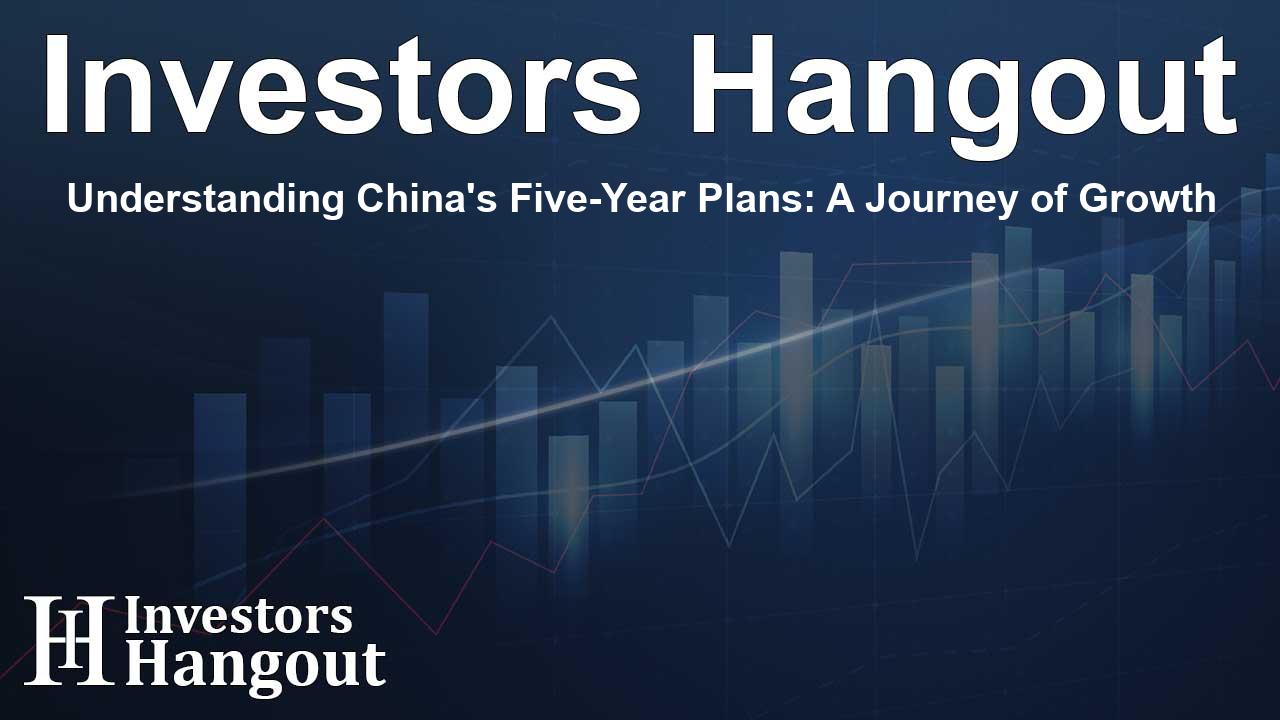Understanding China's Five-Year Plans: A Journey of Growth

China's Five-Year Plans: A Framework for Development
China's strategic framework for development has revolved around its Five-Year Plans, integral to guiding the nation’s economic and social progress. These plans serve as comprehensive blueprints that outline future goals, policy orientations, and key objectives for a five-year period, shaping the country’s trajectory since the first plan was initiated in the mid-20th century.
A Historical Perspective on Economic Planning
The journey began in July 1956 when the First Automobile Works in Jilin Province produced the first vehicle in the People's Republic of China. This landmark event was part of a broader initiative laid out in the First Five-Year Plan (1953-1957), which included 156 key projects aimed at fundamentally transforming the nation's industry. Fast forward to 2024, and the evolution is palpable in the high-tech manufacturing capabilities of companies like BYD, whose Shenzhen factory now produces a new electric vehicle every minute, a clear testament to the advancements emphasized in the 14th Five-Year Plan (2021-2025).
The Importance of Strategic Planning in Governance
The Five-Year Plan, formally known as the Five-Year Plan for National Economic and Social Development, is central to how China manages medium- to long-term planning. It encapsulates the government’s vision and strategy for development, helping to align resources and efforts across various sectors. Yan Yilong, a prominent figure at Tsinghua University, highlights its role in national governance, noting that China's approach to planning reflects a unique blend of socialist principles and pragmatic governance.
Flexibility and Long-Term Thinking
The adaptability of these Five-Year Plans is a hallmark of their success. Scholars like Martin Jacques emphasize that these planning cycles resonate with Chinese culture’s affinity for long-term strategic thinking. This year marks the conclusion of the 14th Five-Year Plan, and as the government prepares for the next cycle, the emphasis will be on fulfilling the objectives of the current plan to ensure a strong foundation for the future.
Participatory Process in Policy Formulation
The creation of a Five-Year Plan involves a meticulously structured process that emphasizes participation. Proposals are initiated by the Communist Party of China's Central Committee and are refined through extensive public input and expert consultation. This framework ensures that the diverse perspectives from multiple sectors are considered, ultimately fostering a sense of collective ownership among citizens.
Expert Feedback and Public Involvement
The involvement of various stakeholders delivers a wealth of insights. Feedback loops through discussions and research ensure that policies are well-informed and reflective of societal needs. The drafting of the most recent plan began three years prior to its adoption, illustrating the lengthy and thorough nature of this policy development cycle.
Challenges Ahead: Preparing for the Future
As the country approaches the commencement of its 15th Five-Year Plan in 2026, it faces multifaceted challenges. Authorities will need to navigate the complexities of maintaining steady growth amid fluctuating effective demand. Strategies will likely include innovative economic practices tailored to boost consumer confidence and stimulate demand through emerging productive forces.
The Role of Innovative Productive Forces
New quality productive forces are highlighted in discussions around the future of China's economy. By focusing on advanced technologies and efficiency, these forces signify a shift away from traditional growth models toward a more sustainable and dynamic economic framework. Yan emphasizes that enhancing common prosperity remains a priority, aiming to improve income distribution and elevate the purchasing power of middle- and low-income segments.
Expectations and Investor Confidence
The economic landscape requires robust expectation management, aligning business perceptions with broader policy goals. Cultivating public confidence not only stabilizes the economy but also encourages growth through a self-reinforcing cycle. Establishing a positive public mindset is essential for fostering an environment ripe for investment and development.
Ensuring Financial Stability
Moreover, as the global economy faces unpredictability, ensuring stability within the financial system is imperative. Addressing challenges in major sectors, particularly real estate and equity markets, will be critical to maintaining investor trust and overall economic health. As articulated by Wang Huiyao, increasing clarity and stability through the Five-Year Plans provides a much-needed anchor during tumultuous times.
Frequently Asked Questions
What is the purpose of China's Five-Year Plans?
The Five-Year Plans are designed to guide the country's economic and social development, outlining goals, objectives, and key strategies for growth.
How does the public participate in the planning process?
Public participation is encouraged through feedback and consultation during the plan formulation, ensuring diverse perspectives inform the decisions made.
What challenges does China face in the upcoming Five-Year Plan?
China needs to address maintaining medium- to high-speed growth while managing demand and ensuring socio-economic stability.
What are new quality productive forces?
These forces represent advanced productivity concepts focused on technology, efficiency, and sustainability, marking a departure from traditional growth methods.
Why is investor confidence important for China's economy?
Investor confidence instills stability, encouraging engagement in the economic landscape and promoting sustained growth and development.
About The Author
Contact Dominic Sanders privately here. Or send an email with ATTN: Dominic Sanders as the subject to contact@investorshangout.com.
About Investors Hangout
Investors Hangout is a leading online stock forum for financial discussion and learning, offering a wide range of free tools and resources. It draws in traders of all levels, who exchange market knowledge, investigate trading tactics, and keep an eye on industry developments in real time. Featuring financial articles, stock message boards, quotes, charts, company profiles, and live news updates. Through cooperative learning and a wealth of informational resources, it helps users from novices creating their first portfolios to experts honing their techniques. Join Investors Hangout today: https://investorshangout.com/
The content of this article is based on factual, publicly available information and does not represent legal, financial, or investment advice. Investors Hangout does not offer financial advice, and the author is not a licensed financial advisor. Consult a qualified advisor before making any financial or investment decisions based on this article. This article should not be considered advice to purchase, sell, or hold any securities or other investments. If any of the material provided here is inaccurate, please contact us for corrections.
